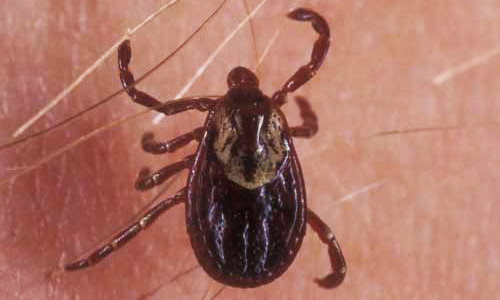Champaign County Faces Rocky Mountain Spotted Fever Case: Public Urged to Take Precaution

The Champaign-Urbana Public Health District (CUPHD) has announced the confirmation of a Rocky Mountain Spotted Fever (RMSF) case in Champaign County, raising concerns about the prevalence of tick-borne diseases in the region. RMSF, caused by the bacterium Rickettsia rickettsii, is primarily transmitted through bites from the American dog tick. It is a potentially deadly disease if not treated early and effectively, even in individuals who are otherwise healthy.
The onset of RMSF symptoms occurs between one to four days after a tick bite, starting with high fever, severe headaches, muscle soreness, and gastrointestinal issues. A distinctive rash, characterized by small, flat, pink spots, may appear several days later, starting on the wrists, forearms, and ankles and potentially spreading to other parts of the body. It is crucial to note that the rash may not appear in all cases, or may present atypically, which can complicate diagnosis.
Ticks, the carriers of this disease, are commonly found in grassy, brushy, or wooded areas, as well as on animals. Activities such as walking dogs, camping, gardening, and hunting increase the risk of exposure to ticks. Residents are likely to encounter ticks even in their own yards or nearby areas.
The CUPHD has emphasized the importance of preventive measures to reduce the risk of tick bites. Recommendations include using tick repellents that have been registered by the Environmental Protection Agency, treating clothing and gear with products containing 0.5 percent permethrin, and conducting thorough body checks after being outdoors. Ticks on clothing can be killed by drying clothes at high temperatures for at least 10 minutes.
Immediate showering after returning indoors can help wash off unattached ticks and provides an opportunity to check for ticks that may have latched on. Information on proper tick removal is crucial and can be found on the CDC’s tick removal webpage.
The Illinois Department of Public Health, in collaboration with the Illinois Natural History Survey, has developed an interactive tick surveillance map. This resource helps residents identify areas where ticks are prevalent and the diseases they may carry. A recent press release by the department urges the public to educate themselves about ticks and actively participate in efforts to “Fight the Bite” this tick season.
Residents experiencing fever and/or rash after potential tick exposure should seek medical attention promptly to prevent severe complications associated with RMSF. The CUPHD is urging everyone to stay vigilant and proactive in combating the spread of tick-borne illnesses.





